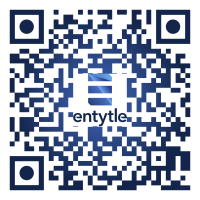How do you go about designing UX for the industrial world? After all, industrial design is synonymous with the industrial sector (it’s in the name silly!!).
To understand why the Industrial world is UX-starved, we have to first explore the specific factors that lead us to this situation:
- ERPs and CRMs are clunky tools used by the Industrial world that are decades old. You can try using any leading CRM forum frequently and you will begin to understand why these CRMs are a nightmare to work with.
- The industrial world suffers from a dichotomy of living, breathing, and designing equipment that last decades while using mobile operating systems that don’t last a year.
- The sense of purpose is critical within industrial design. Machine design is driven by the “quality of affordance” that requires a form to follow function. (Affordances are properties of objects which show users the actions they can take. Users should be able to perceive affordances without having to consider how to use the items. For instance, a button can be designed to look as if it needs to be turned or pushed.)
- A painful slow move from the paper world to screens – The industrial world is still undergoing digitization (or the act of moving from paper to digital medium) and far away from digitalization (ie. the act of transforming workflows using the latest technology available).
Designing has for a long time been associated with just how a product looks, and its visual appeal, but with growing industries, technological advancements, and human beings’ mental model, the feel of a product (which is the user experience) comes into the picture and the demand for a good user experience in the industrial world has increased.
“User experience is a term that one instantly associates with apps and websites. UX is all about developing a better digital world for the consumer, it requires innovation, and is constantly evolving.”
UX is a way of communicating with the users, it acts as a communicator between the user and a machine. Without UX, the process will be very difficult for users to make the best use of the product and the interaction could be confusing. When a business launches any product they want to generate revenue, increase sales and increase the business and UX plays an essential role in reaching that goal. Having a good UX in the application makes the interaction with the product very smooth for the users, which results in bringing better customer satisfaction. And these satisfied customers will always recommend the application to others, helping increase the ROI for the company.
One of the major aspects of UX is “The users”- the customers, the audience. Understanding the users and having deep empathy for them is a vital factor in creating the best user experience, the designs are created keeping users in the center (bringing in the HCI concept). So understanding the needs of these users, the pain points, and creating solutions for those via the design is one of the important aspects of being a UX designer. Having such an in-depth understanding of your users helps in the conversion of the prospect users into your loyal users.
At Entyle, we deeply respect and keep customers first and to do that accurately we follow the design thinking approach. Design thinking is an iterative process, where we seek to understand the user, the challenges they face, and find solutions for those problems; it’s a solution-based approach to solving problems.
Designing thinking includes these steps, that we incorporate into our work culture:
Empathize – with the users
Define- your users’ needs, their problems, and your insights
Ideate- by challenging assumptions and creating ideas for innovative solutions
Prototype- to start creating solutions
Test- the solutions
1. Empathize:
Understanding your users is the first step toward creating products they want and need. Before starting with any solutions, first, it is important to be aware of what the user thinks and feels, and what their challenges are, this allows us to set aside our own assumptions and get true insights. So, to do that different types of research are conducted like surveys and user interviews. Gathering this knowledge helps us understand our target audience better and assists us better in taking decisions on their behalf.
2. Define:
With our findings from the previous step (Empathise), now we try to define the problem statement and start the creation of Personas and User Journey. These help us to always be on track and think from the user’s perspective when we have to take any decision, it lets us stick to their needs and pain points.
3. Ideate:
Now that we have figured out the problem statement, it’s time to generate as many solutions to the problem as we can think of. We have dedicated ideation sessions, where we try to think of the problem and its solution with a free mind and do out-of-the-box thinking. Here the focus is on the number of ideas than the quality of the idea called Diverging. Once we have a set of ideas in front of us, we being to Converge, meaning we strike out the ideas upon validation, that aren’t generating much value, or that isn’t feasible and we keep doing this to narrow down to some of the best solutions.
4. Prototype:
Now with the few listed solutions from the previous step, it’s time to find out the best possible solution with prototyping. At this step, we can experiment and turn ideas into prototypes. Prototyping is an inexpensive way to create a solution that looks like just a real product, it helps to understand the flaws, what can be improved in the flow, and to take feedback from users and stakeholders.
5. Test:
This is the last step and where the iteration starts. Now we take this prototype to the users and stakeholders for feedback, we notice how they interact with the prototype where they struggle, what they like what they dislike. Based on the feedback, changes and improvements are made. It is always easy to go back to re-design the elements or flows helping with the refining of work which saves a lot of development costs. This surely is the last step of design thinking but the process never stops here. The thing is design thinking isn’t a linear process, so after you have tested the design, and you uncover some new problems you may have to get back to the other stages depending upon the need, thus it is called the iterative process.
For an enterprise industry, a good UX of the product really adds great benefits to the business’s success and brings great value. UX just isn’t limited to making something appear appealing, it brings user satisfaction and their productivity gets higher.
Design is everywhere. From the dress you’re wearing to the smartphone you’re holding, it’s design. – Samadara Ginige



